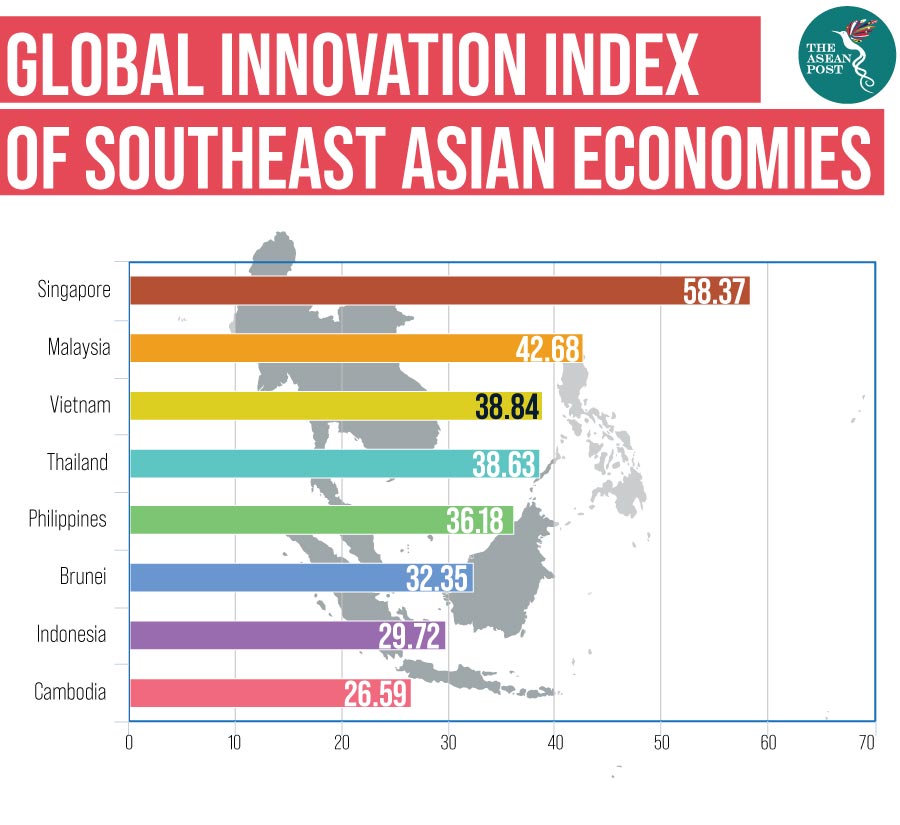Creating new products, processes and ideas, innovators are at the forefront of development and progress. Be it a corner-shop or a multinational company, businesses that innovate are able to attract the best talent, increase revenues, scale up more efficiently and grab bigger shares of their respective markets.
The best innovators are able to capture a niche market and help their brand stand out by meeting their customers’ ever-changing needs – key to any business’ longevity. With Fourth Industrial Revolution technologies steadily making their way into our daily lives, innovative tools and methods are now more accessible than ever.
“Innovation is at the heart of economic growth in the world economy, and it is innovation that established the competitive advantage of countries, economies and individual enterprises,” said Francis Gurry, World Intellectual Property Organisation (WIPO) Director General.
Global Innovation Index
While innovation is blossoming around the world – as the 2019 Global Innovation Index (GII) notes –new obstacles pose risks to global innovation. Productivity growth is at a record low amidst trade battles, protectionism and economic uncertainty, making sound government planning all the more critical.
Now in its 12th year, the ranking of 129 economies is a benchmarking tool for business executives, policymakers and others seeking insights into the state of innovation around the world. Co-published by Cornell University, INSEAD and WIPO, the GII has observed growth in innovation in most ASEAN economies.
The GII is based on seven pillars; institutions, human capital & research, infrastructure, market sophistication, business sophistication, knowledge & technology outputs and creative outputs. Each of these pillars are divided into three sub-pillars – which then include two to five individual indicators.
There are 80 indicators in total, taking into account traditional measurements like research and development (R&D) investments and international patent and trademark applications to newer indicators such as mobile app creation and high-tech exports.
As in last year, all ASEAN economies rank in the top 100 of this year’s GII and continue to improve their standings through better innovation, R&D and economic development indicators.

ASEAN improving
While Singapore still leads the field in Asia and ASEAN, globally, it has slipped three places to eighth partly due to decreases in R&D, foreign direct investment (FDI) inflows and females employed with advanced degrees.
Malaysia remain 35th in the list and ranks in the top-10 in several indicators and topped trade-related variables such as high-tech imports and high-tech net exports (third and first, respectively) and creative goods exports (first).
The World Bank divides economies into high income, upper middle-income, lower middle-income and low income. As the second most innovative upper middle-income economy, Malaysia was behind only China in this regard.
Vietnam made important progress this year by moving up three positions and reaching 42nd overall, with improvements observed in human capital and research (61st), market sophistication (29th) and knowledge and technology outputs (27th). Vietnam also stands tall as the best lower middle-income economy on the index.
Thailand moved up one spot to 43rd after finishing second in indicators such as tertiary enrolment and quality of scientific publications.
While the Philippines jumped 19 spots to 54th with strong showings in ICT services exports (eight) and creative goods exports (eight), the ease of starting a business and getting credit were identified as areas which needed improvement.
With Myanmar still absent from the global innovation landscape, Cambodia remains the newest ASEAN economy to be part of the GII. The country is second in the group in FDI net inflows and also takes that position in joint venture-strategic alliance deals, behind Singapore.
Switzerland topped the index for the ninth time followed by Sweden, the United States (US), the Netherlands and the United Kingdom (UK).
This year’s theme, Creating Healthy Lives – the Future of Medical Innovation, analysed the medical innovation landscape of the next decade and looked at how technological and non-technological medical innovation will transform the delivery of health care worldwide.
“While the Global Innovation Index ranks economies according to their innovation capacity and performance, it also provides valuable insights into the dynamics of global innovation,” said Soumitra Dutta, professor of operations, technology and information management at Cornell’s Samuel Curtis Johnson Graduate School of Management, and founding editor of the index.
“It highlights economies that excel in innovation and those that are more successful in translating investments in innovation inputs into innovation outputs,” Dutta said. “Lessons from these innovation leaders provide useful guidance on innovation policy for others.”
Related articles:
AI and big data in the legal profession
